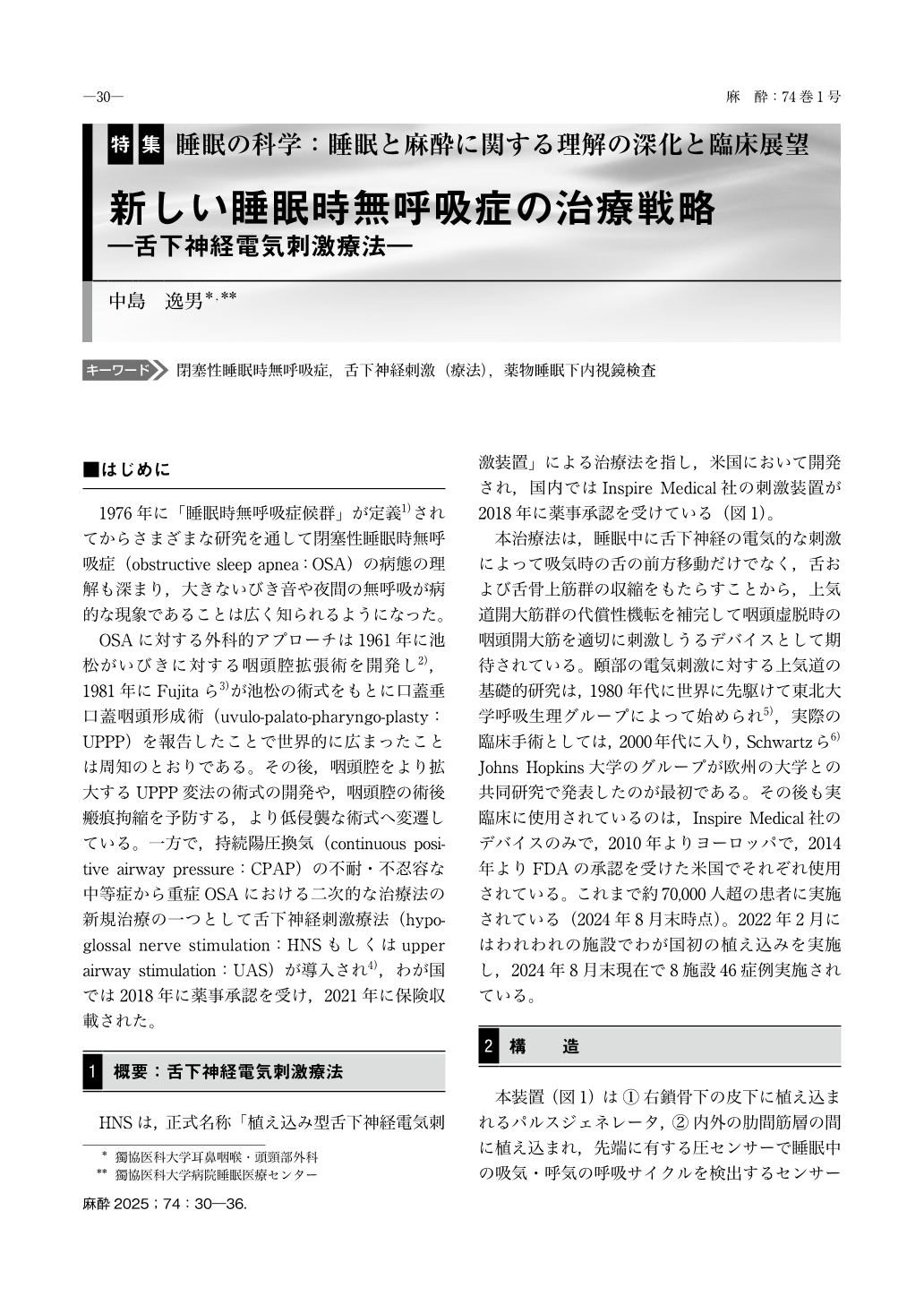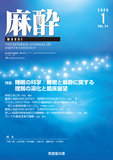Japanese
English
- 有料閲覧
- Abstract 文献概要
- 1ページ目 Look Inside
- 参考文献 Reference
- サイト内被引用 Cited by
はじめに
1976年に「睡眠時無呼吸症候群」が定義1)されてからさまざまな研究を通して閉塞性睡眠時無呼吸症(obstructive sleep apnea:OSA)の病態の理解も深まり,大きないびき音や夜間の無呼吸が病的な現象であることは広く知られるようになった。
OSAに対する外科的アプローチは1961年に池松がいびきに対する咽頭腔拡張術を開発し2),1981年にFujitaら3)が池松の術式をもとに口蓋垂口蓋咽頭形成術(uvulo-palato-pharyngo-plasty:UPPP)を報告したことで世界的に広まったことは周知のとおりである。その後,咽頭腔をより拡大するUPPP変法の術式の開発や,咽頭腔の術後瘢痕拘縮を予防する,より低侵襲な術式へ変遷している。一方で,持続陽圧換気(continuous positive airway pressure:CPAP)の不耐・不忍容な中等症から重症OSAにおける二次的な治療法の新規治療の一つとして舌下神経刺激療法(hypoglossal nerve stimulation:HNSもしくはupper airway stimulation:UAS)が導入され4),わが国では2018年に薬事承認を受け,2021年に保険収載された。
The use of hypoglossal nerve stimulation(HNS)as a treatment for obstructive sleep apnea(OSA)is becoming increasingly widespread. HNS received pharmaceutical approval in 2018 in Japan and has been covered by health insurance since 2021. HNS is a non-anatomical modifying surgery that can achieve an adequate objective and subjective results, with a reasonable complication rate. HNS is indeed one of the most promising tools in the widespread context of personalized sleep medicine within a single procedure. This review provides an overview of the current evidence regarding the selection of patients for HNS, highlighting the reasons behind the optimistic future of this OSA treatment.

Copyright © 2025 KOKUSEIDO CO., LTD. All Rights Reserved.


